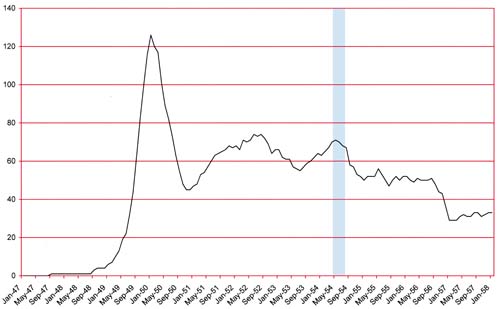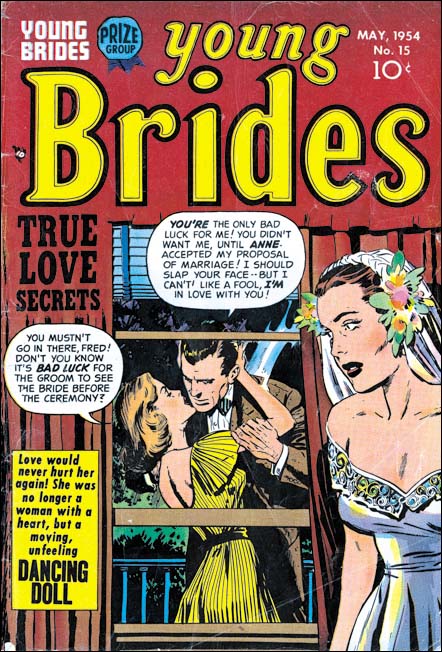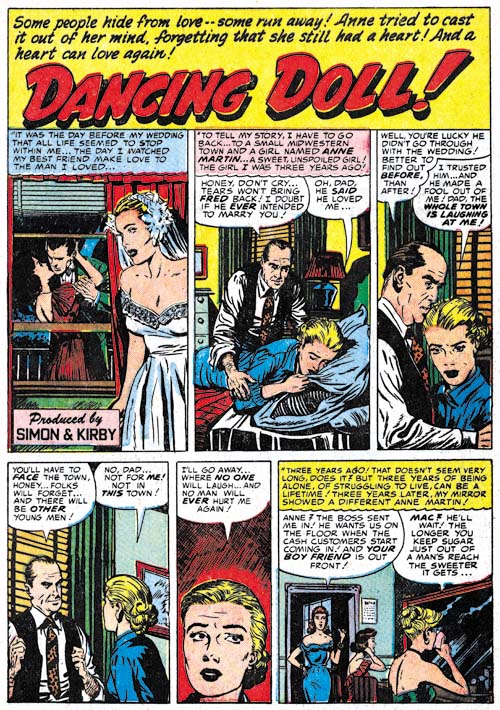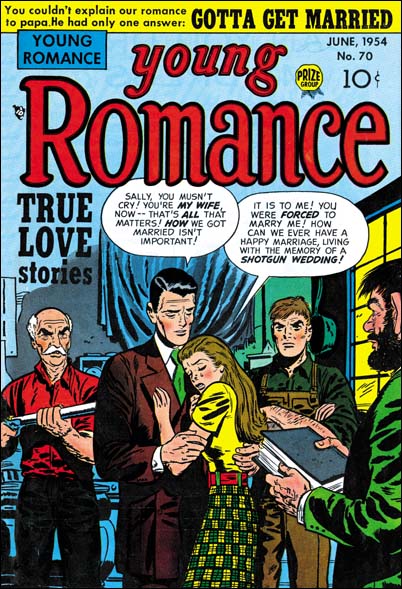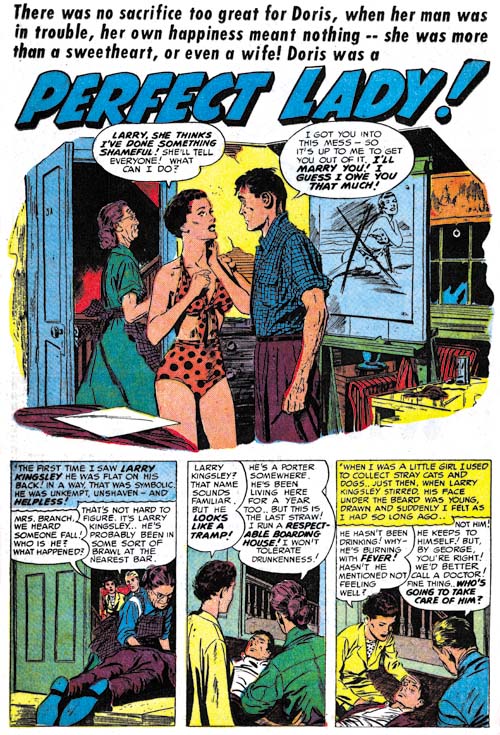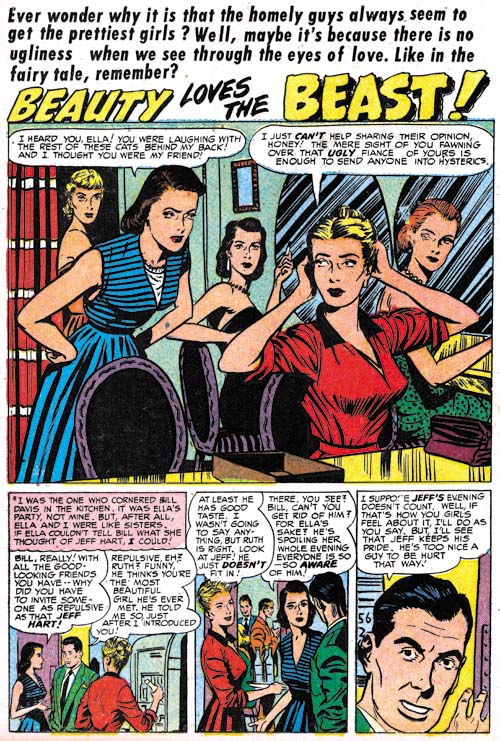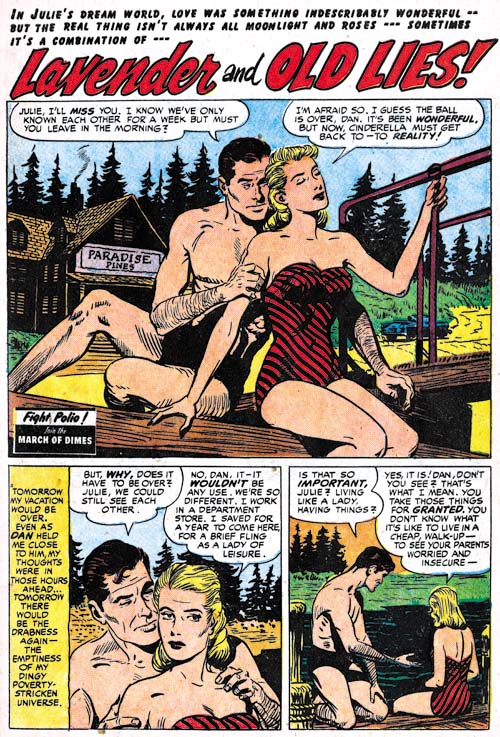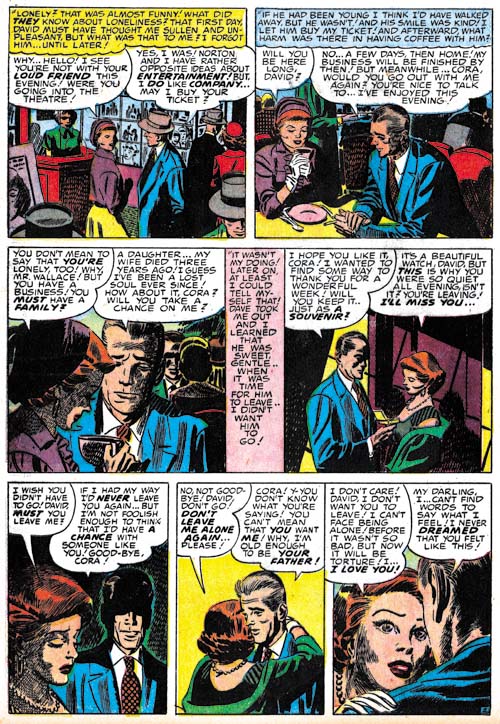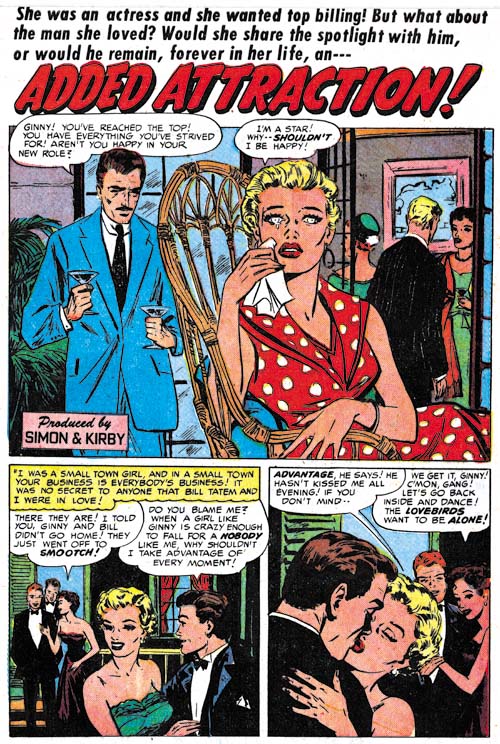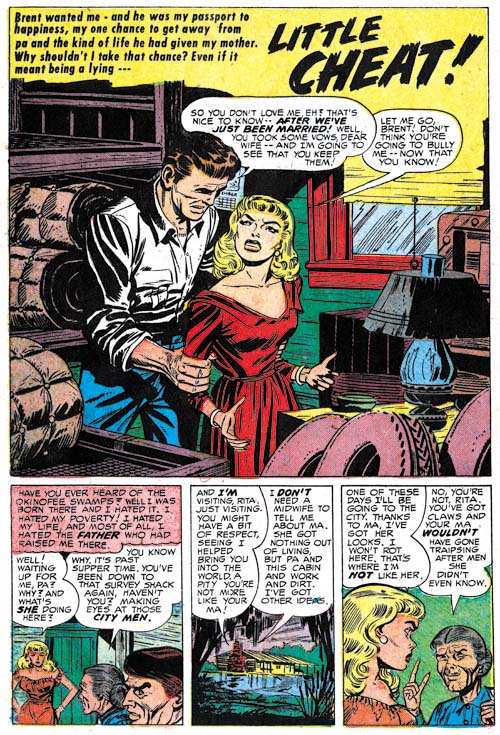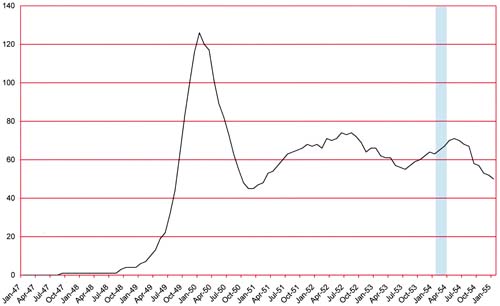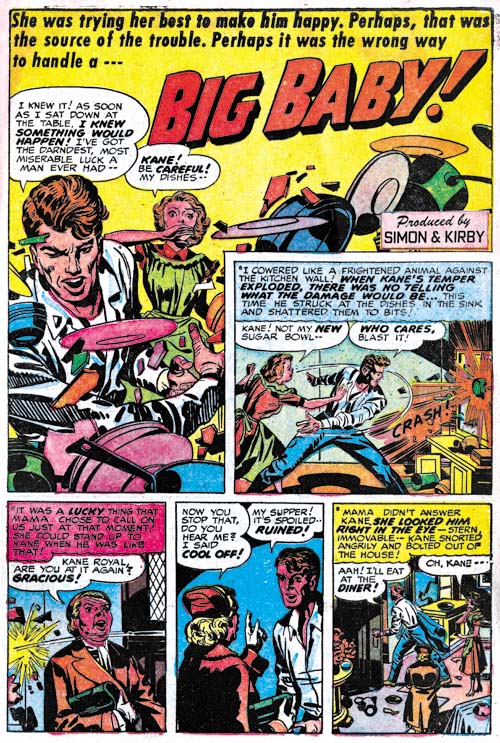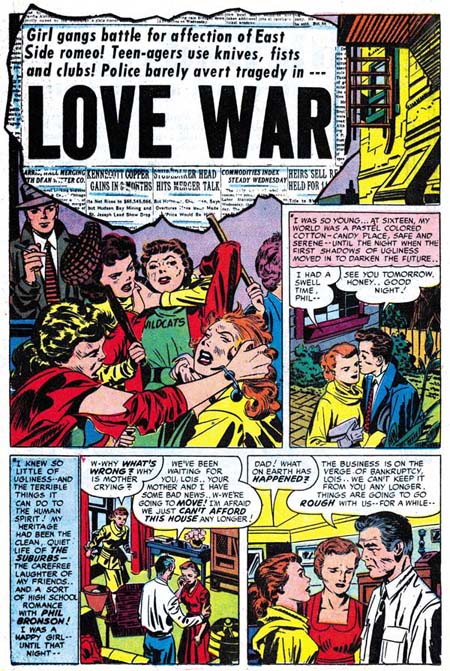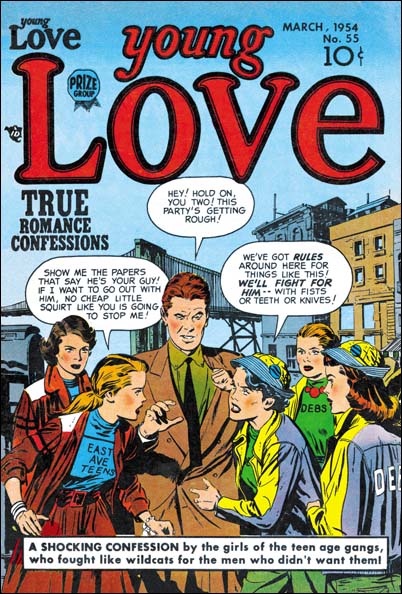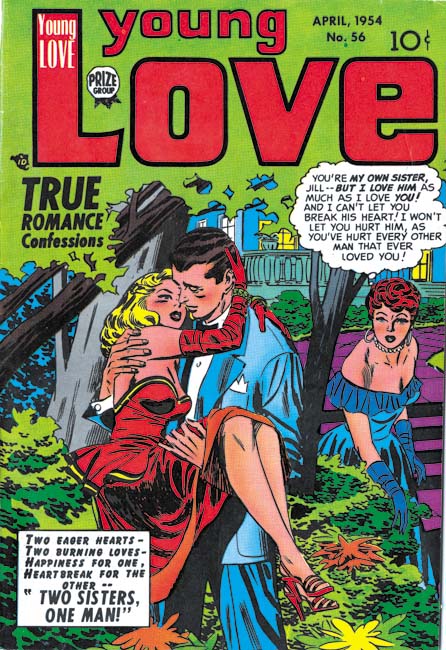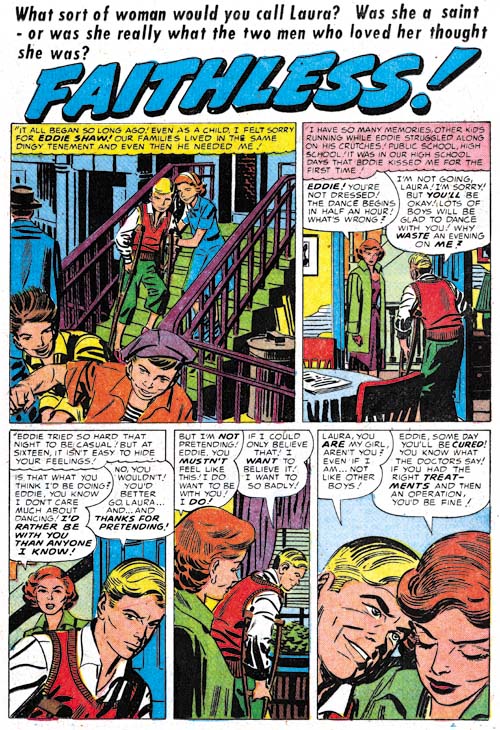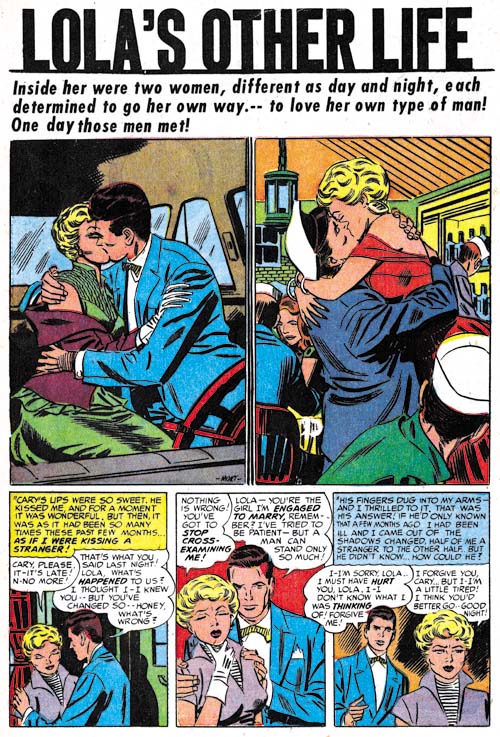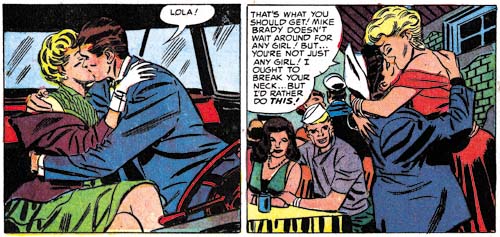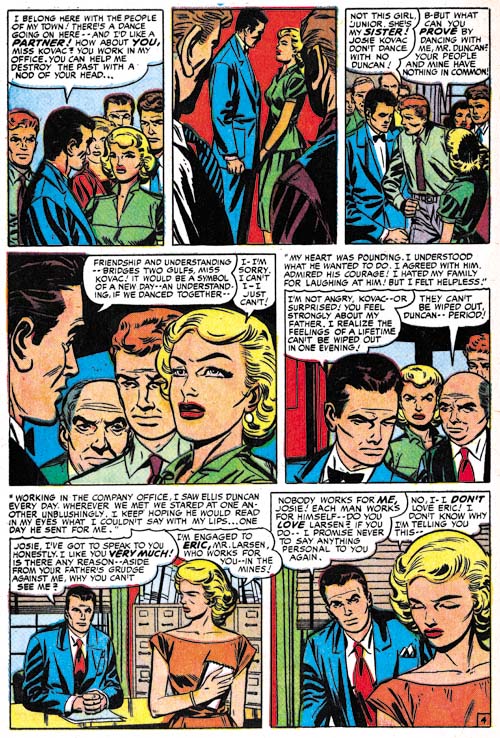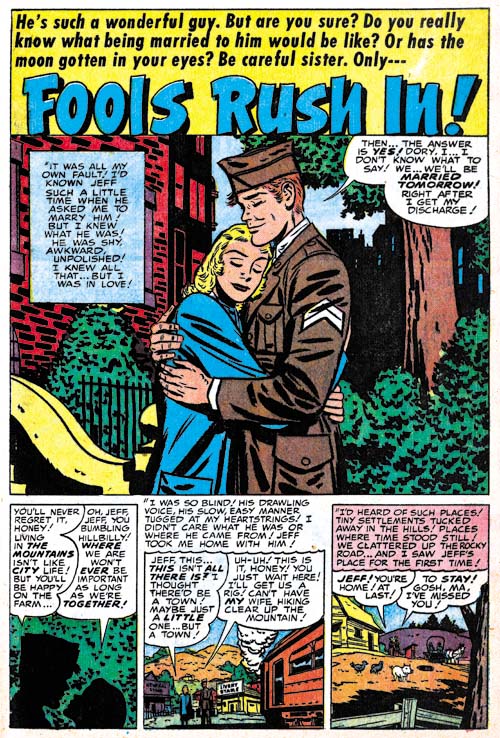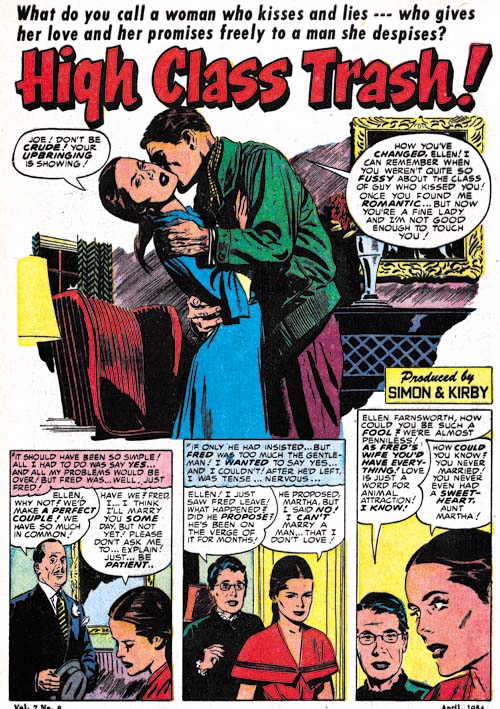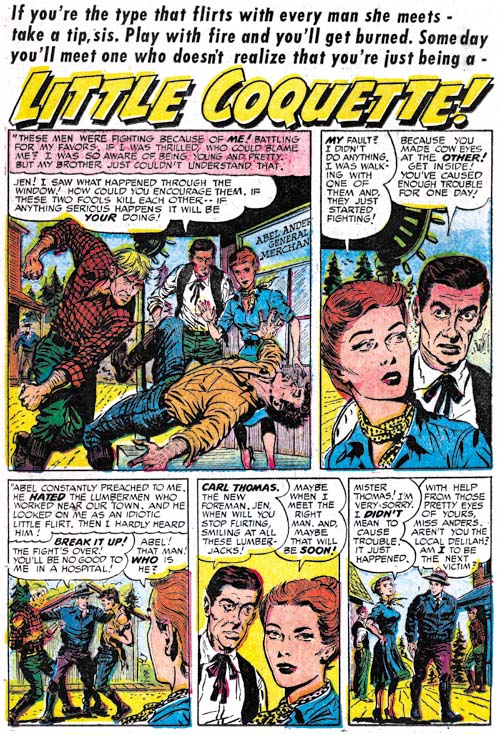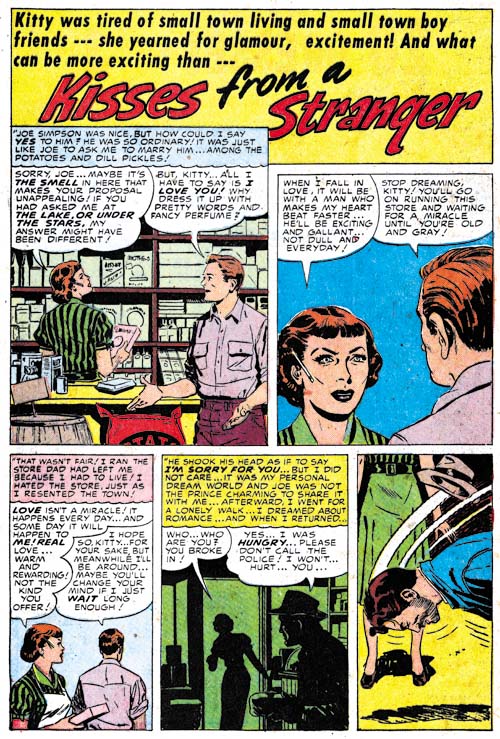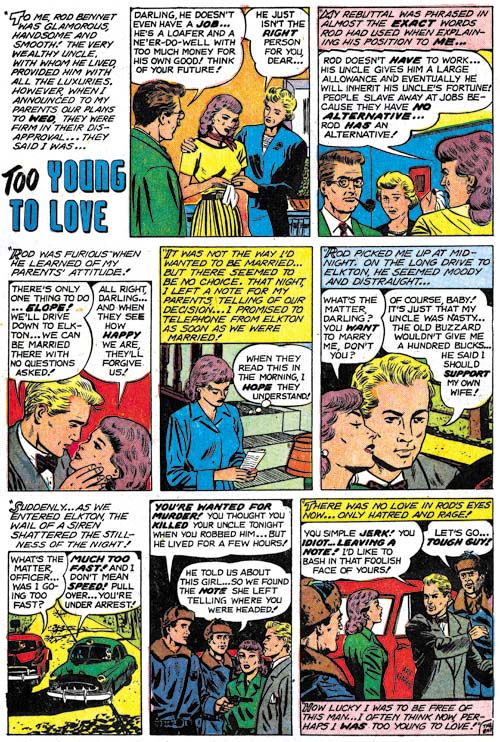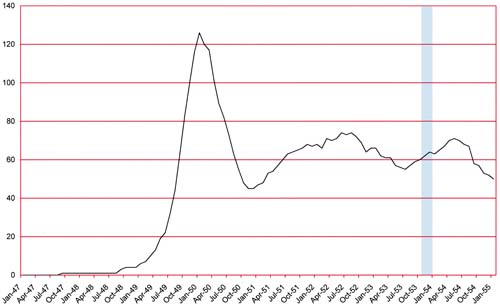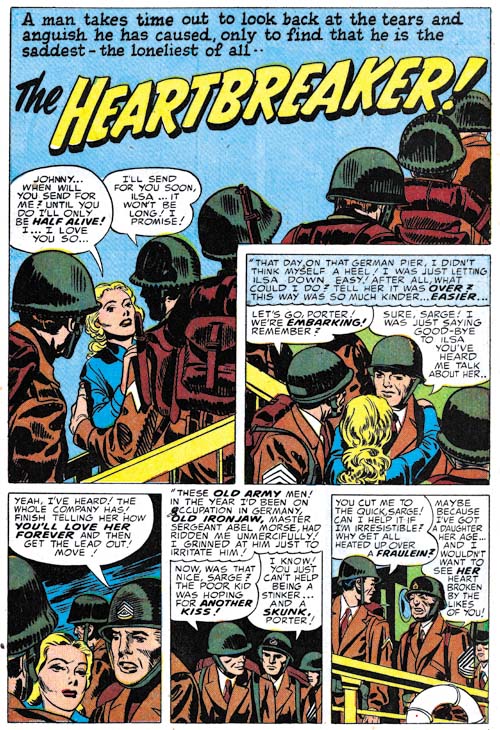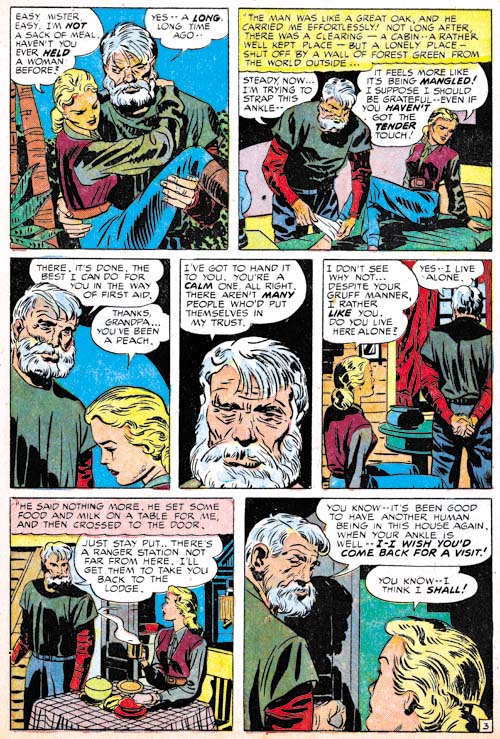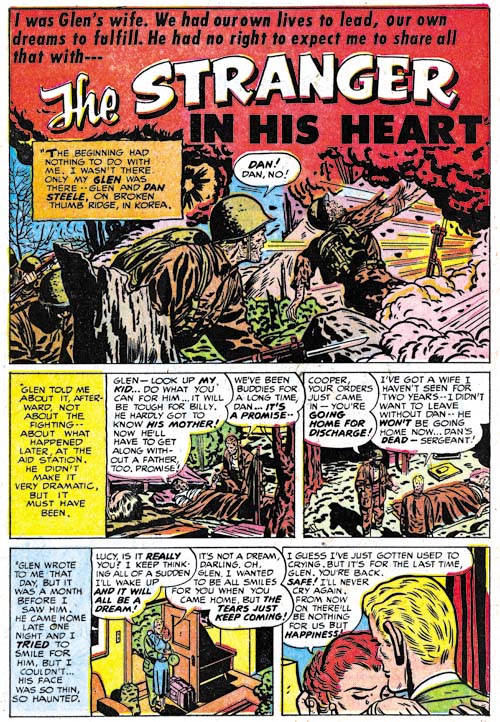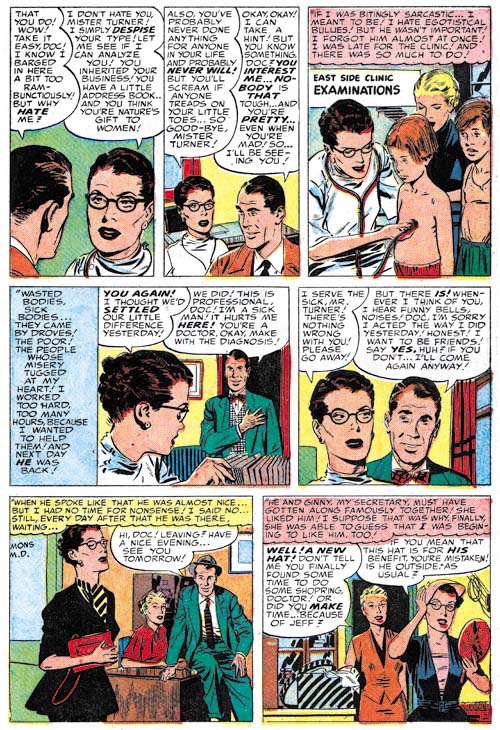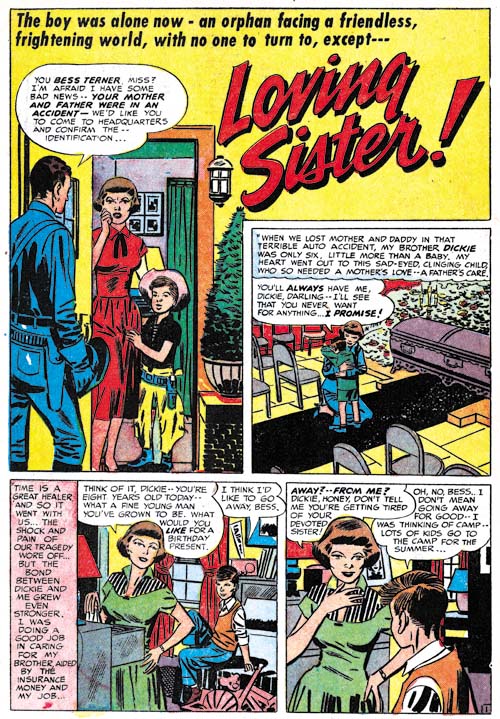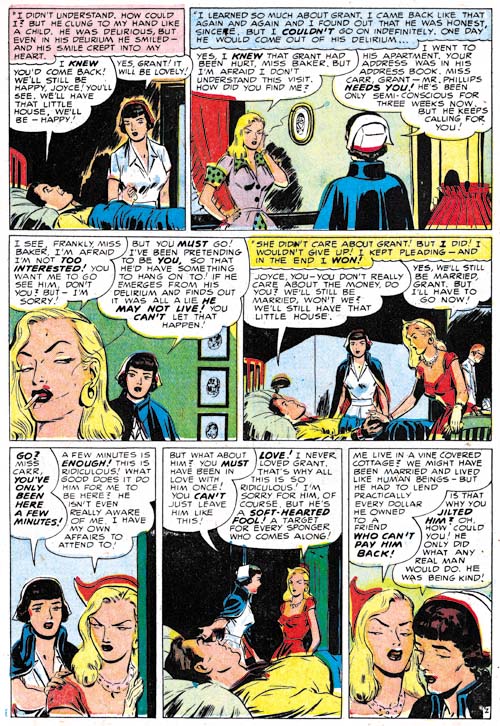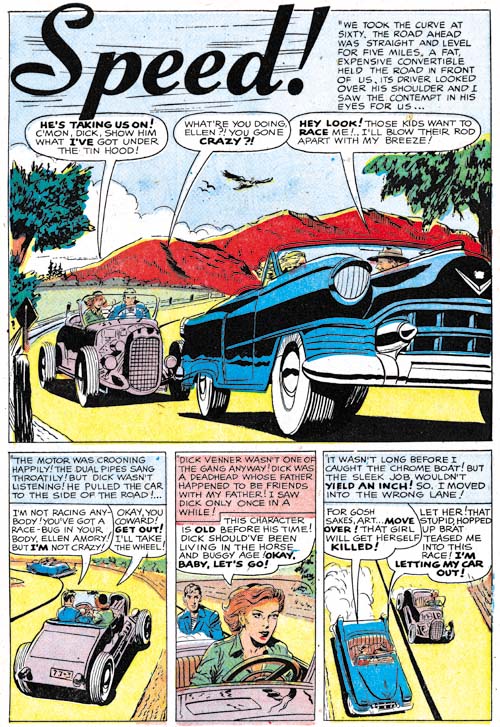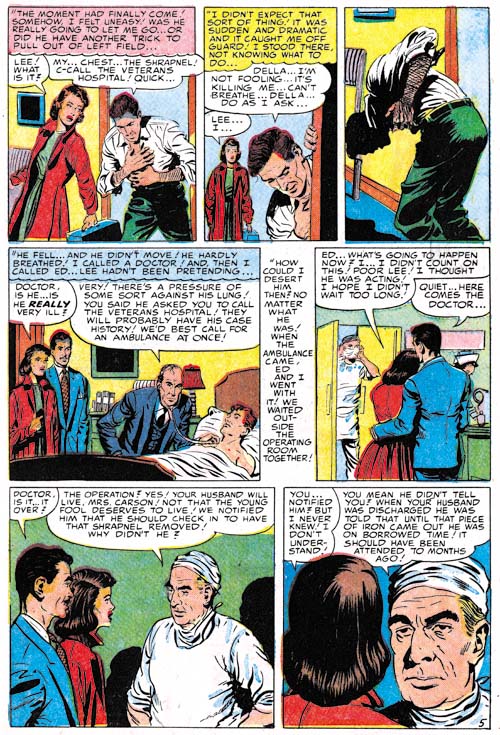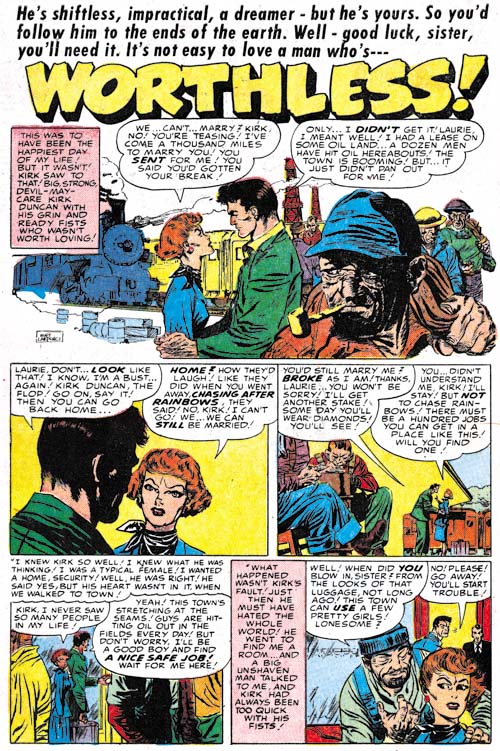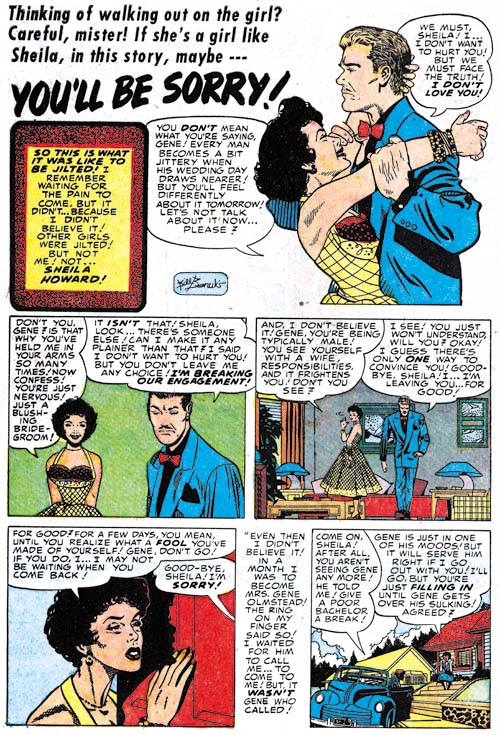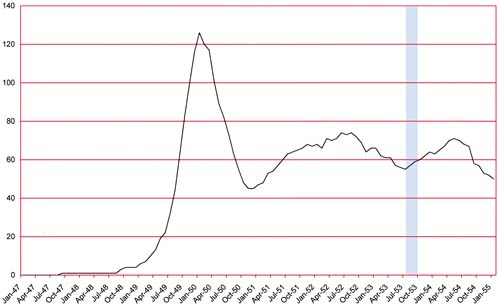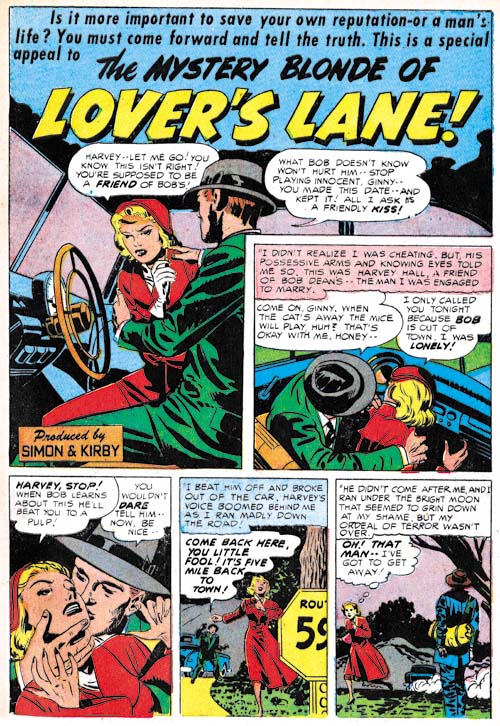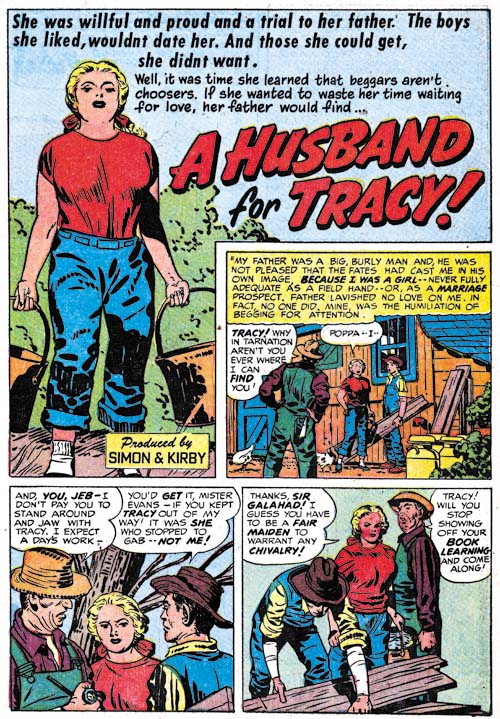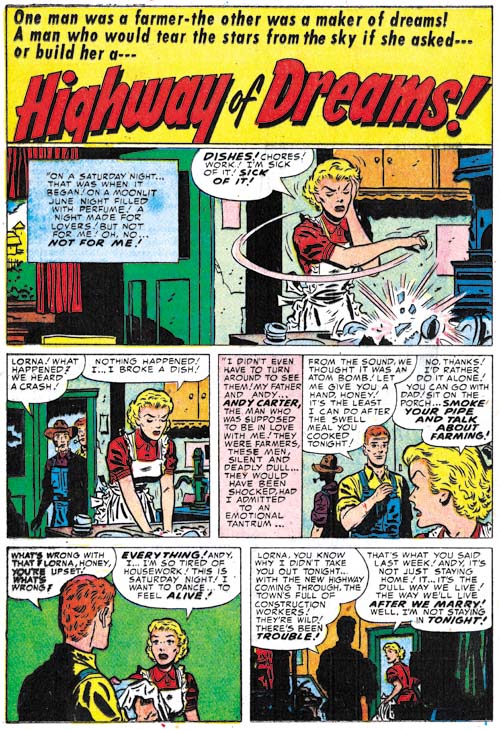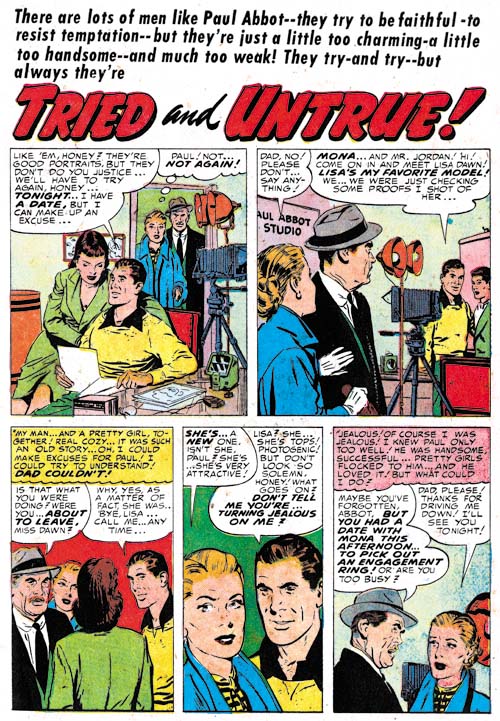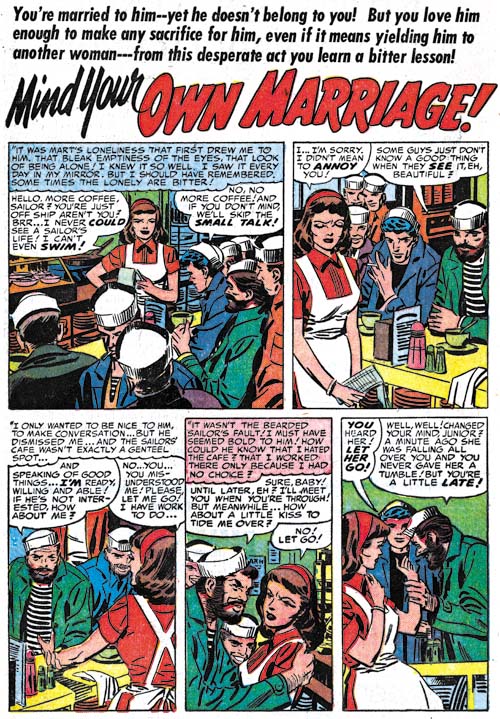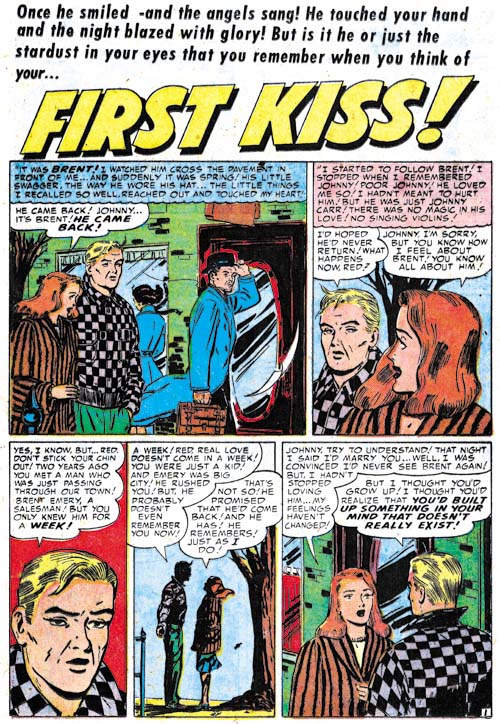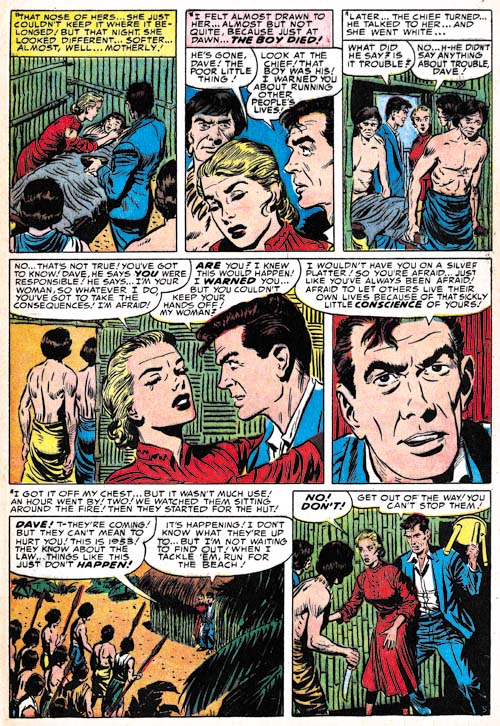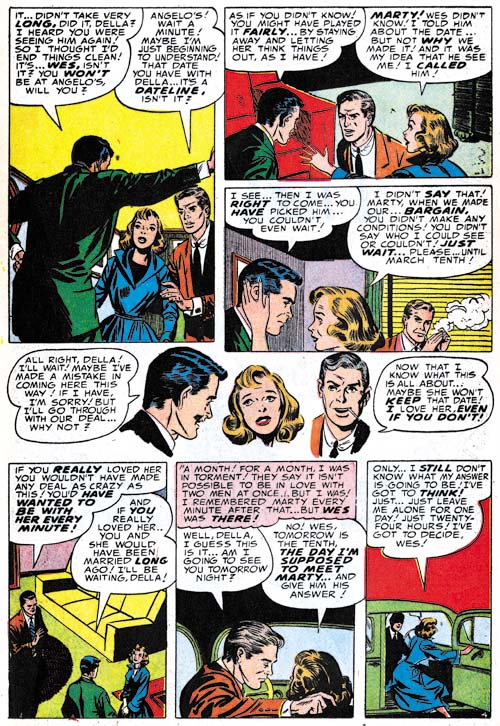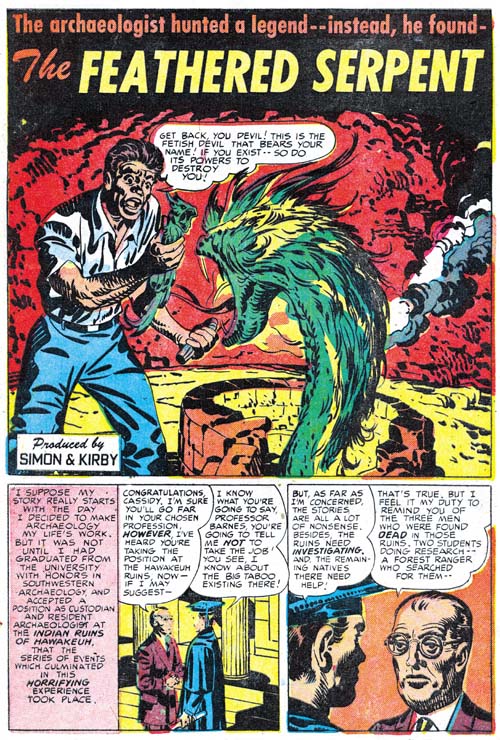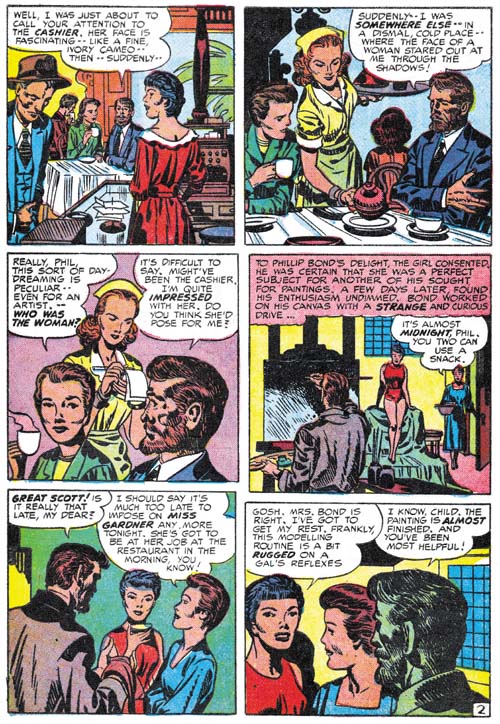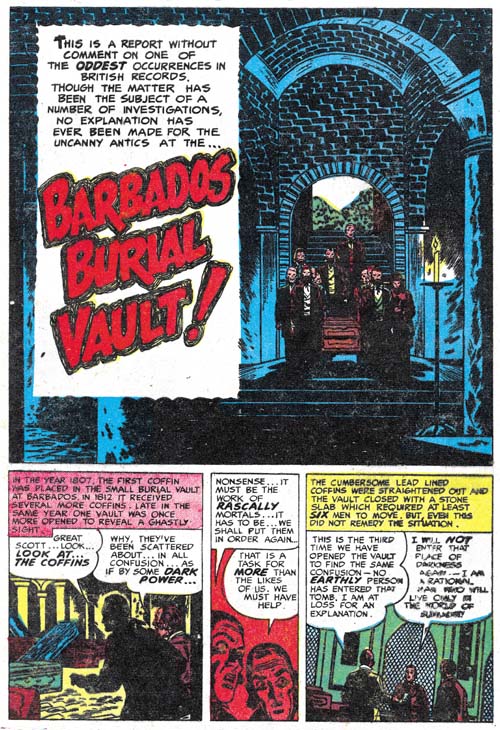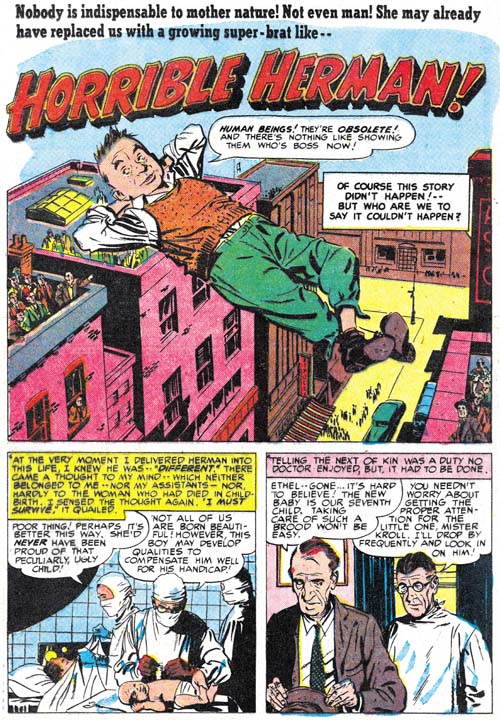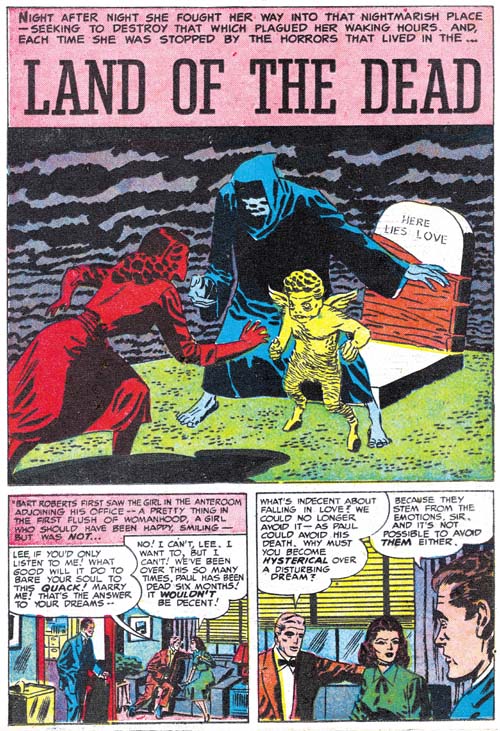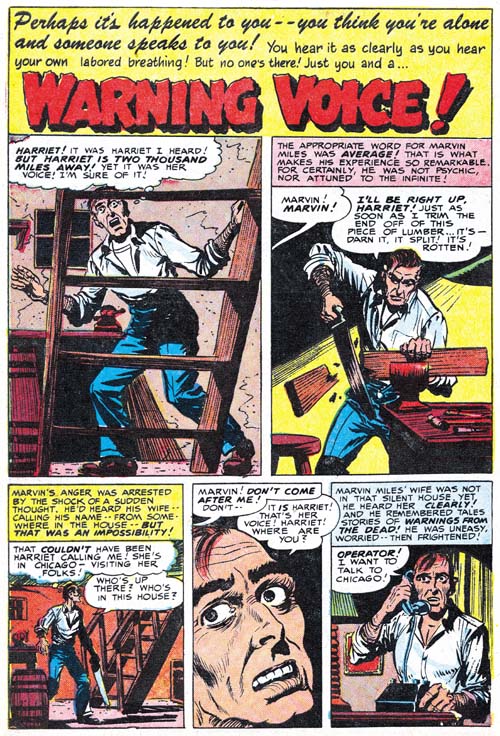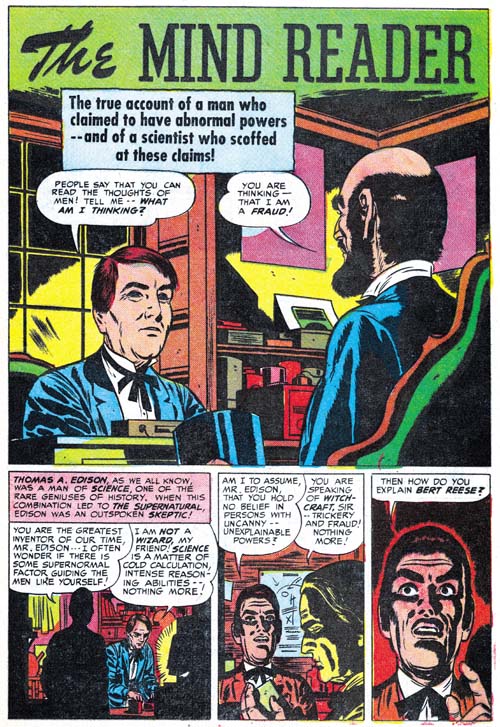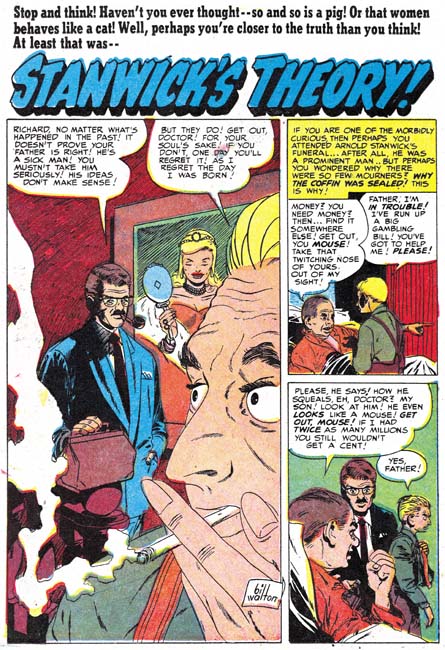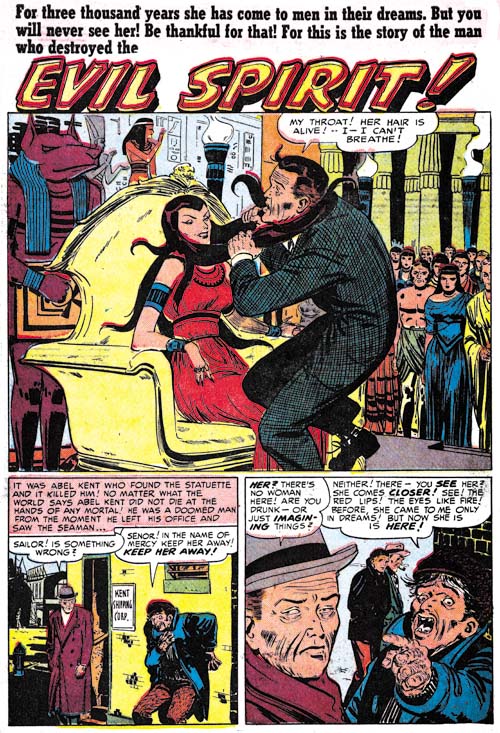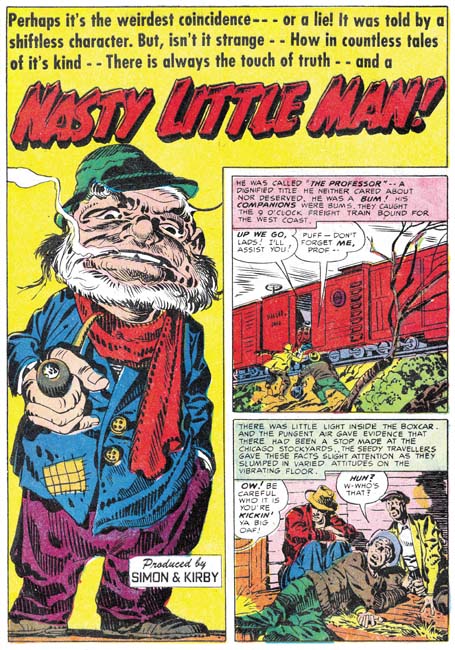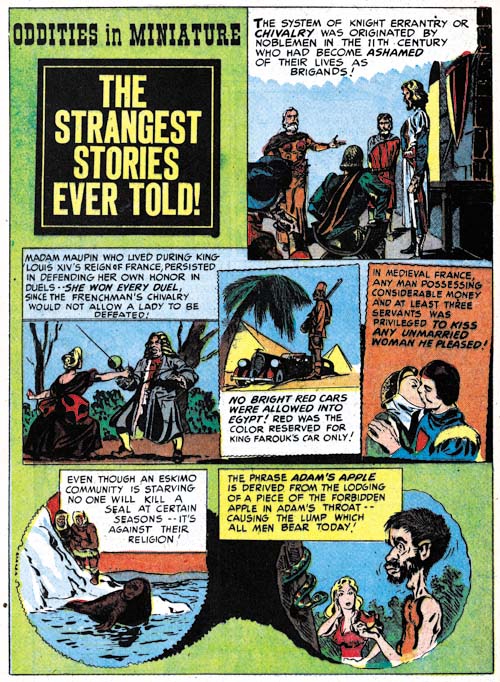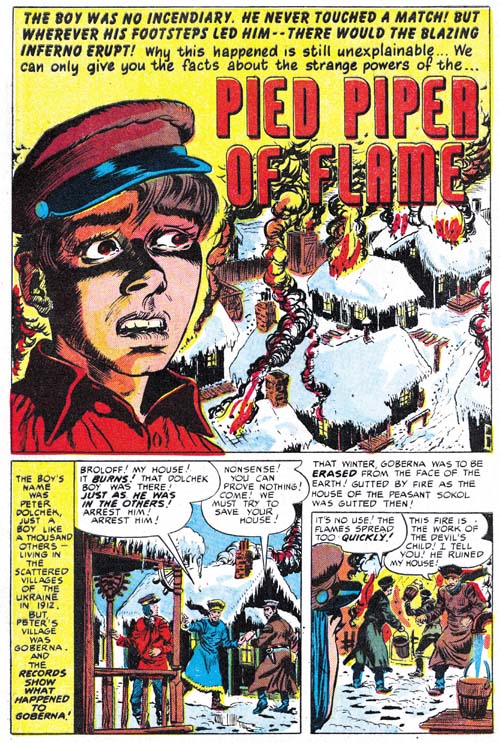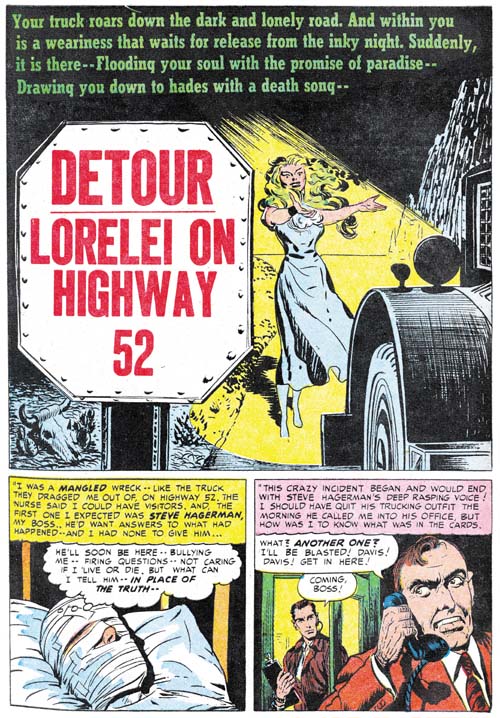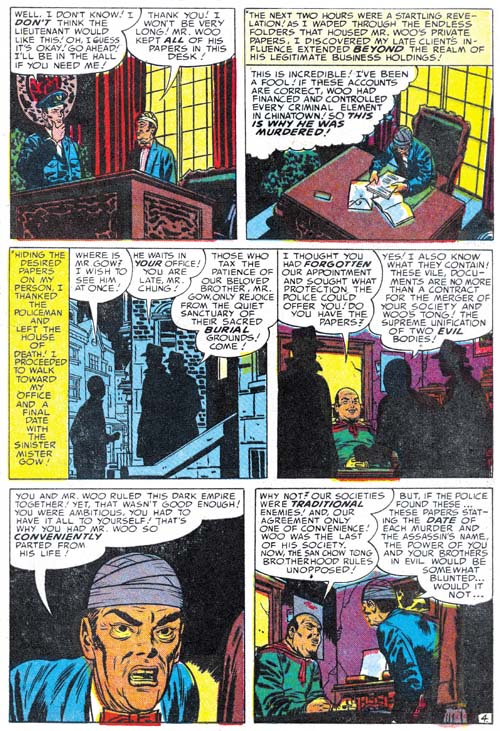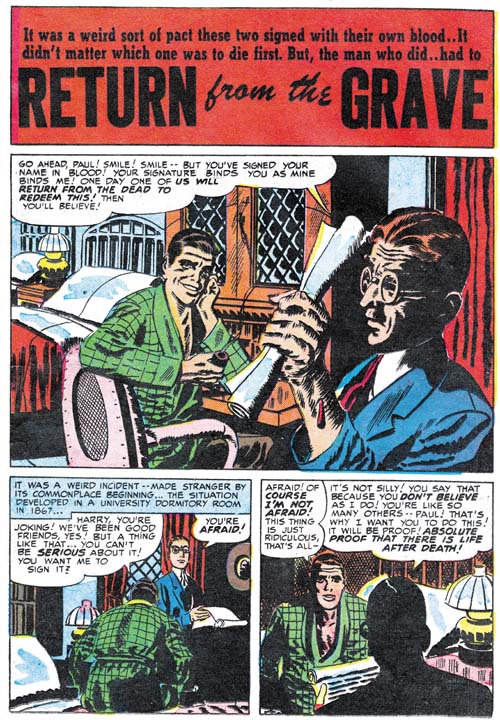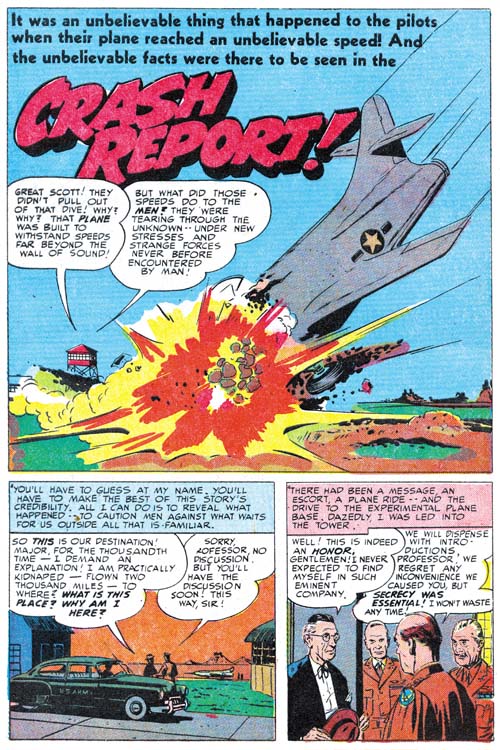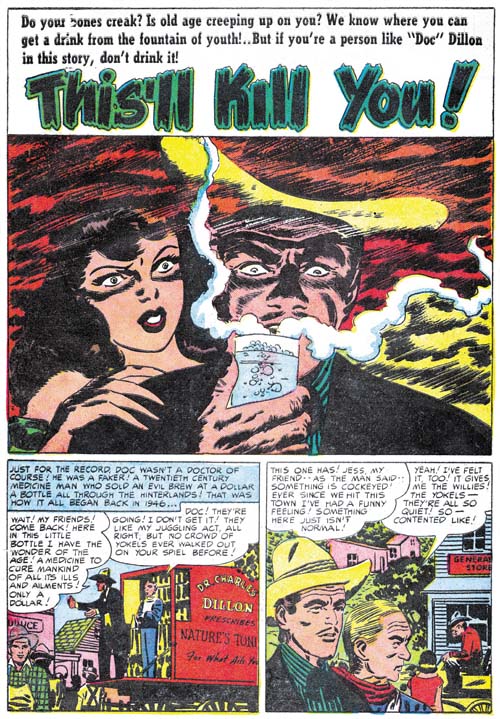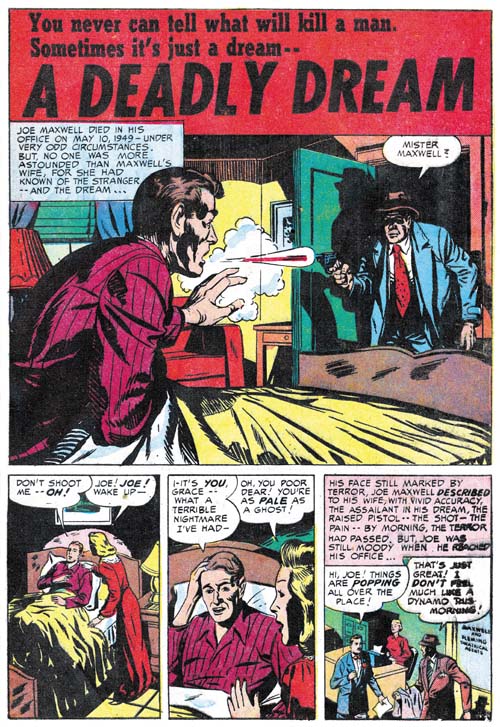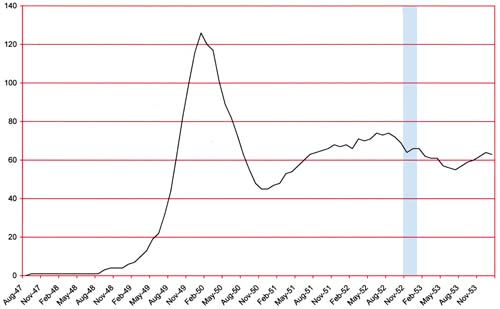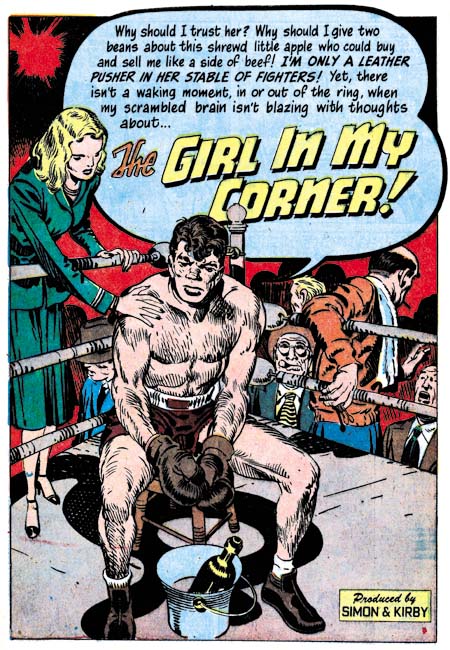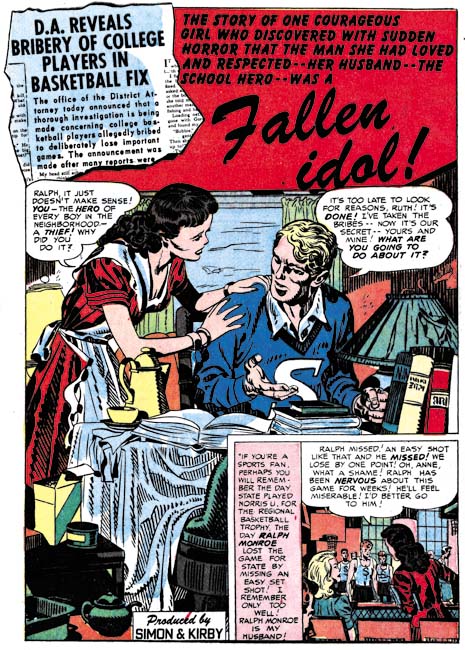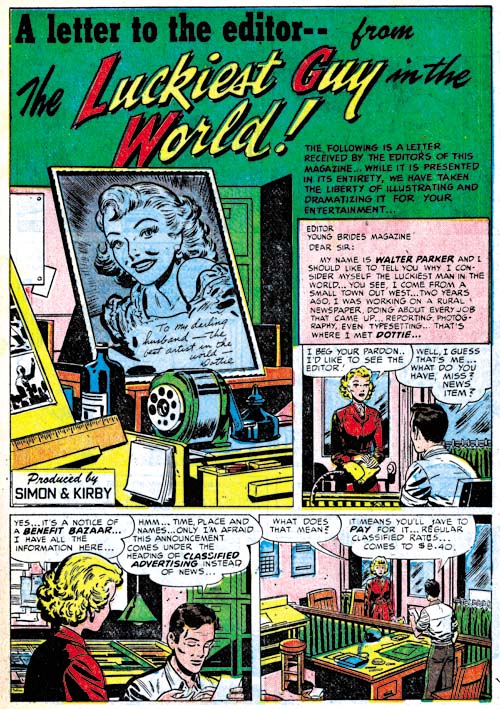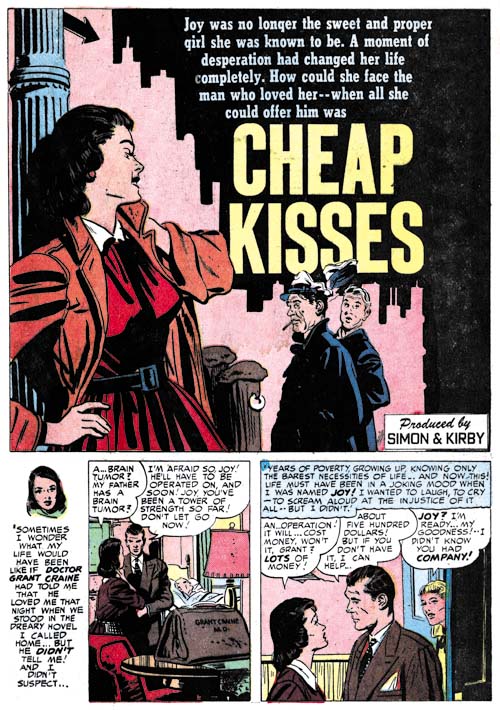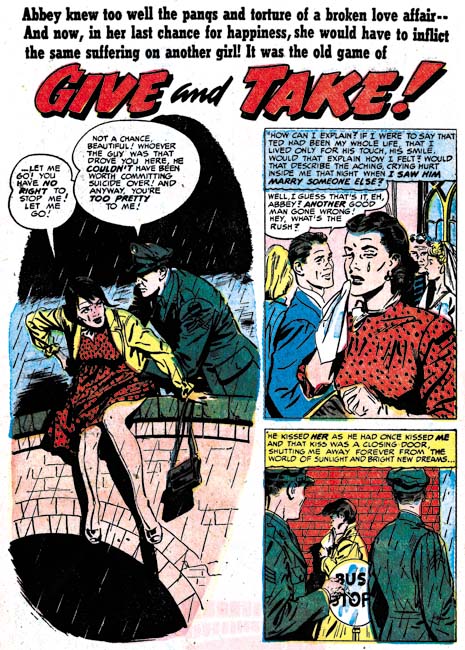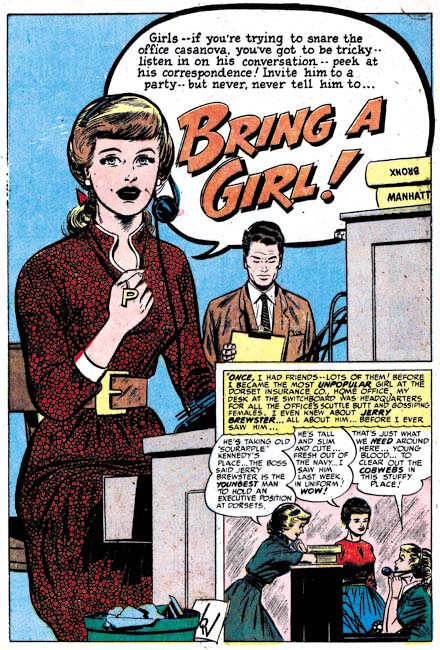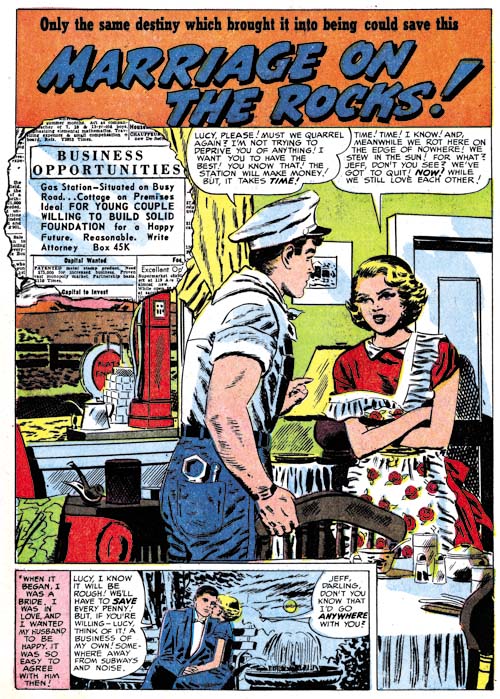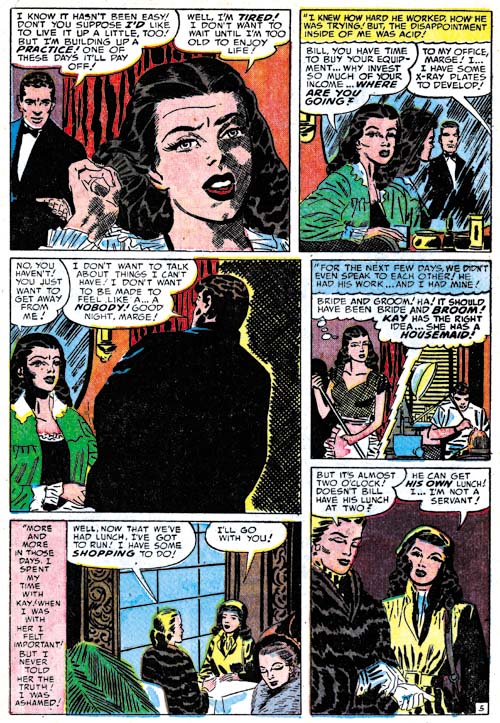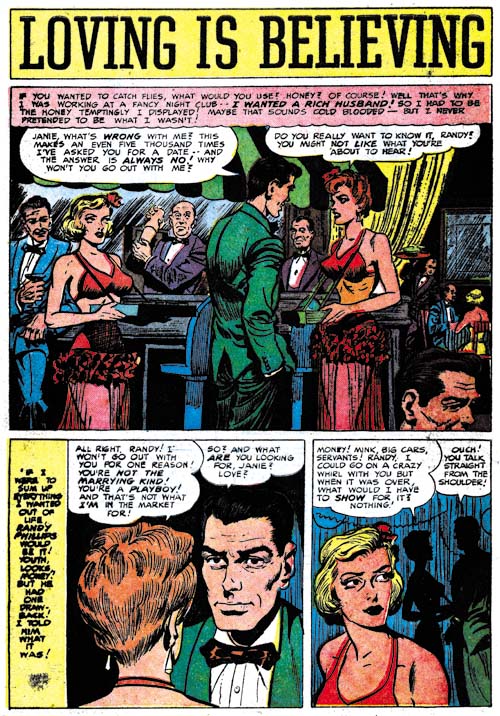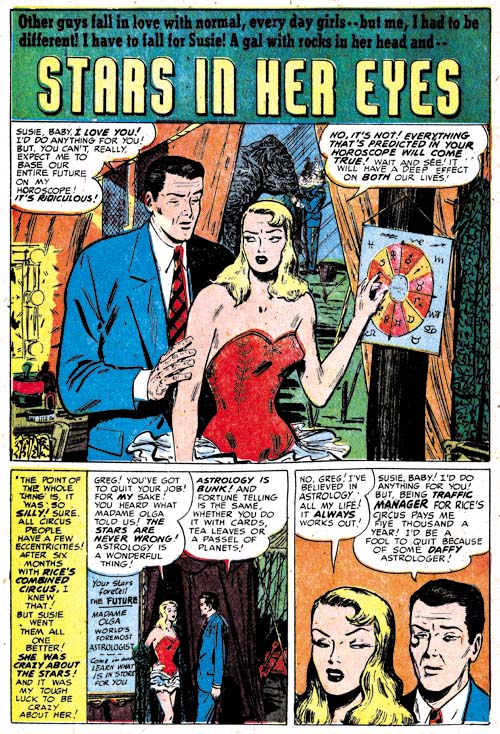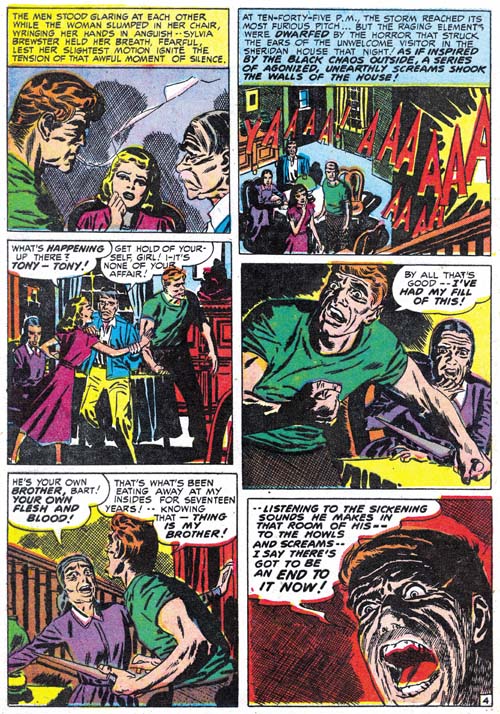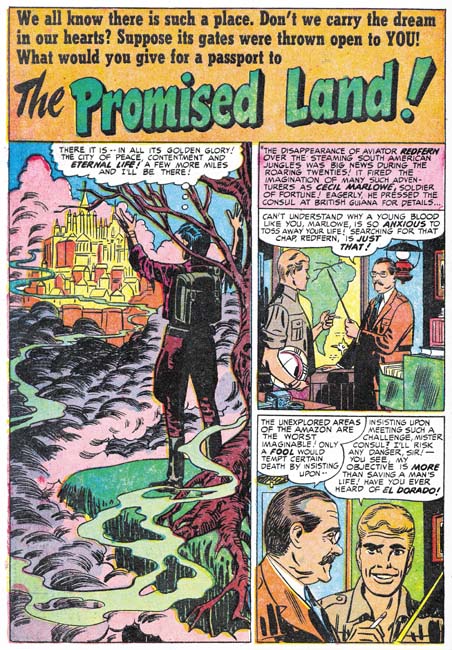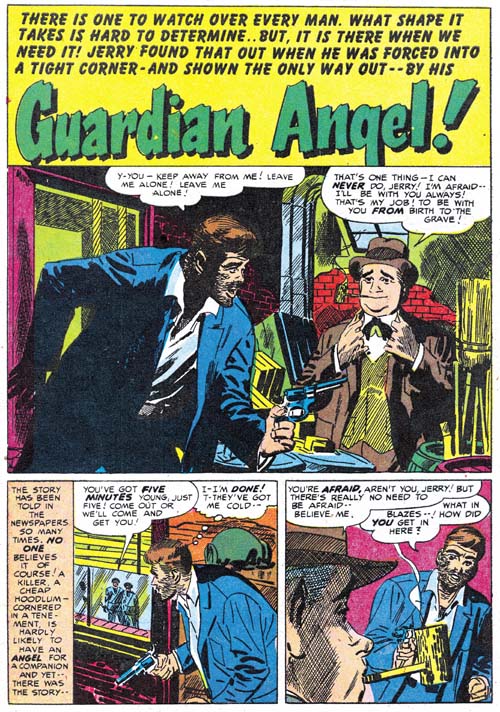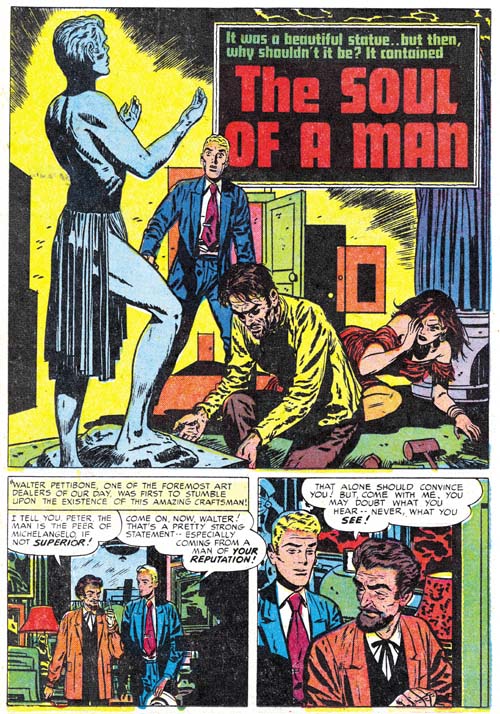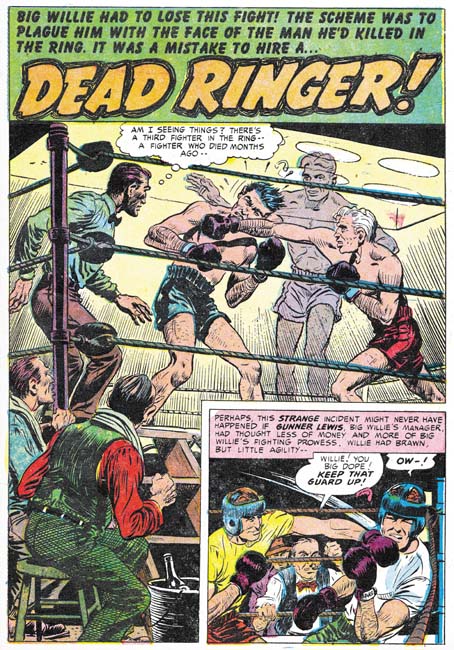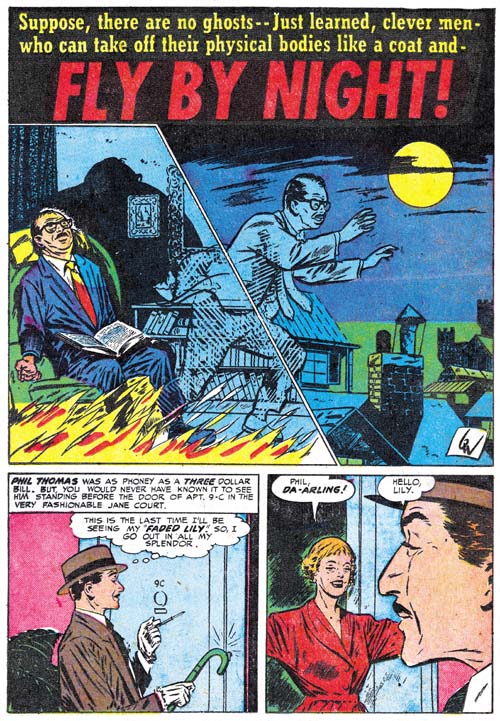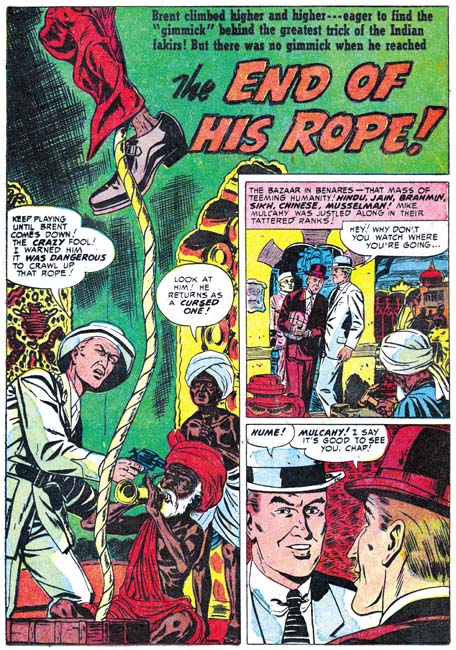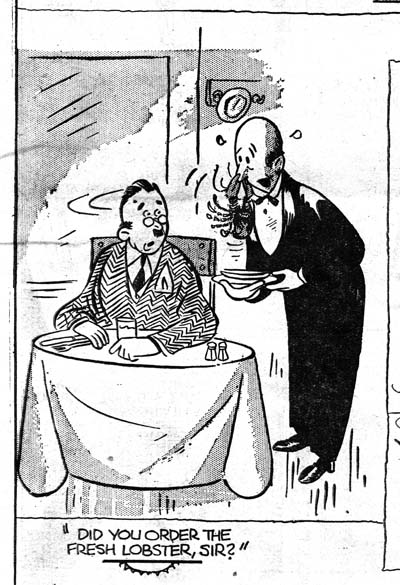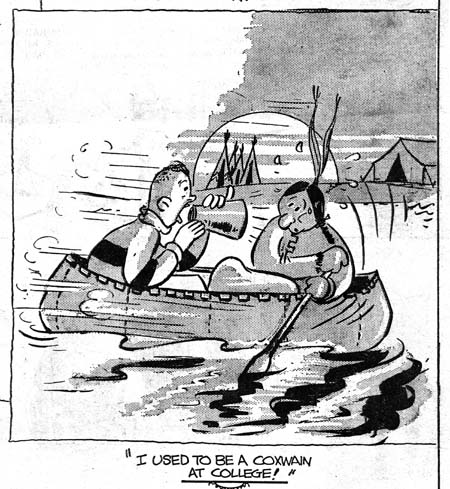(November 1953 – March 1954, Black Magic #27 – #29)
In the previous chapter Black Magic went on a bimonthly schedule (with issue #25, July 1953). The three issues I am covering in this chapter fall onto the same period as chapters 25 and 26 of The Art of Romance (but not chapter 27). Just like what was seen in the romance titles, Black Magic story format switched to using either splash-less stories or splashes that were actually part of the story.
Jack Kirby is the most prolific artist during this period; providing a total of 24 pages (including the covers). The second place is taken by a new comer, Steve Ditko (17 pages). The third place was taken by Bob McCarty (15 pages) with Al Eadeh and Bill Benulis (each doing a single 5 pages story). There are also some single page and one double page feature done by an unidentified artist, probably a studio assistant.
Ditko’s appearance in the Simon and Kirby studio was particularly timely because he was on hand to help with the inking of Captain 3D (December 1953). But Steve’s presence in Simon and Kirby productions was short lived as these three issues are the only ones from this run that he worked on. Most of the artists employed by Simon and Kirby were given assignments in all the genre but Ditko was one of the exceptions as he did not do any of the much more abundant romance work. I do not know who made the decision to limit Ditko to the Black Magic title but it was probably a good one. Frankly the only romance work that I have seen by Ditko suggests that romance simply was not his forte.
One of the surprising aspects of issues cover in this chapter concerns the artists that do not appear. Bill Draut was a prolific artist for the romance titles but did not provide a single piece for Black Magic at this time. Mort Meskin complete absence is a little less surprising since he during the early part of this period he did not appear that much in the romance titles. However that changed during the later part of this period and so I would normally expect something by him to show up here. John Prentice also did no Black Magic work despite providing a lot of romance art. However Prentice appears to be an exception to the studio artists in that he always seemed to do much more romance work than horror. This biased use of Prentice is highlighted by the contrast provided by Bob McCarty. Prentice and McCarty were both doing a similar amount of romance art but only McCarty made an appearance in Black Magic.

Black Magic #28 (January 1954) “Alive after Five Thousand Years”, art by Jack Kirby
As discussed in the introduction, Black Magic stories had become either splash-less or with a splash that was actually part of the story. Here Kirby has technically adhered to the second format since the next panel clearly is an advance of what is presented in the splash. However by eliminating the use of any speech balloons, the splash became more like a traditional splash. This technique was simple but rather effective that I wonder why it was not used more often.
Lately I have not been discussing the inking of Kirby’s stories because other projects that I am involved in simply do not leave me the time to adequately research inking attributions. But when I reviewed this story my initial reactions was the splash was inked by Kirby himself. However on further reflection I thought the spotting to be overly methodical. Kirby’s own inking usually has a very spontaneous nature of an artist with a clear mental image of what he is trying to create and complete mastery of the tools (in this case the inking brush) to create it.
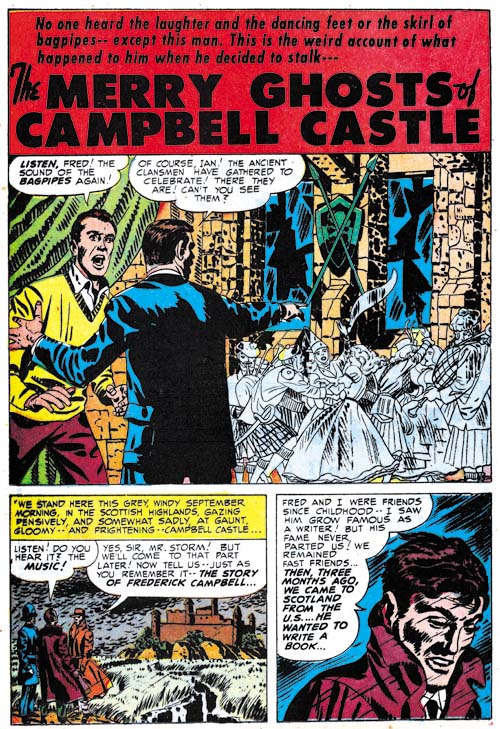
Black Magic #27 (November 1953) “The Merry Ghosts of Campbell Castle”, art by Jack Kirby
The inking of Kirby’s pencils during the Simon and Kirby period was like a production line with different artists. Nonetheless a particular inker could impart such an effect on the art that in effect he can be called the primary inker. The best of these inkers were, in my opinion, Jack himself, Joe Simon and Mort Meskin. There were other artists who gave the inking their own unique look but frankly they were not just nearly as good. The inking of “The Merry Ghosts of Campbell Castle” is one that shows a distinct hand; only in this case a very talented one. Brush techniques characteristic of what I call the Studio Inking were used but they do not appear to be done in quite the same manner as Kirby, Simon or Meskin might have used. The picket fence crosshatching on the curtain in the splash for example does not seem to have the spontaneity of Kirby, the roughness of Simon or the tight control of Meskin. There is other brush work that seems rather unique such as the inking on the stonework in the splash. I have not made a detailed comparison but it is possible that this is the same inker that worked on “Alive after Five Thousand Years”. In any case he was a talented inker; I just wish I had some idea who he might have been.
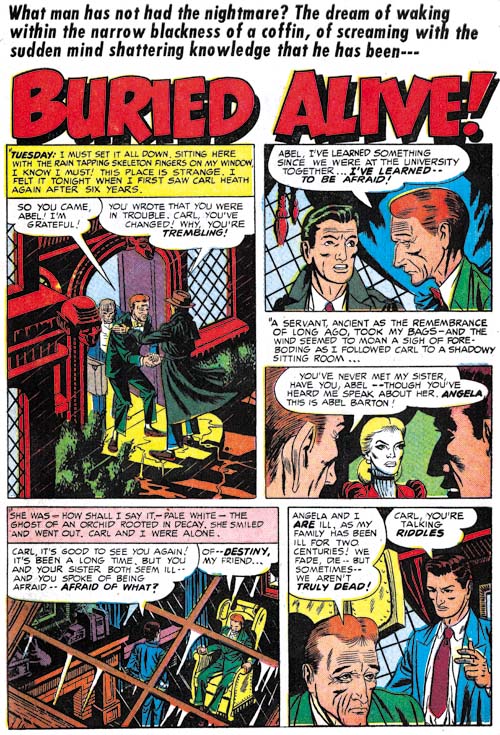
Black Magic #28 (January 1954) “Buried Alive”, art by Steve Ditko
The work Steve Ditko did for the Simon and Kirby was from the very start of his career. There are a few earlier pieces he did for other publishers but not many. Even so it is not hard to see his distinct hand in part of these pieces. Perhaps less so with the first page of “Buried Alive” but that page does show Steve already had a strong sense of how to graphically tell a story. The shifting view points are all very effective. Still there are aspects of his art that can be considered primitive compared to what Ditko would do in the future.
Should the first panel be called a splash? Frankly the distinction between a splash-less story and a story splash is pretty arbitrary in some cases. What is important is that the story starts right away without a tradition splash that served as a preview of the story.
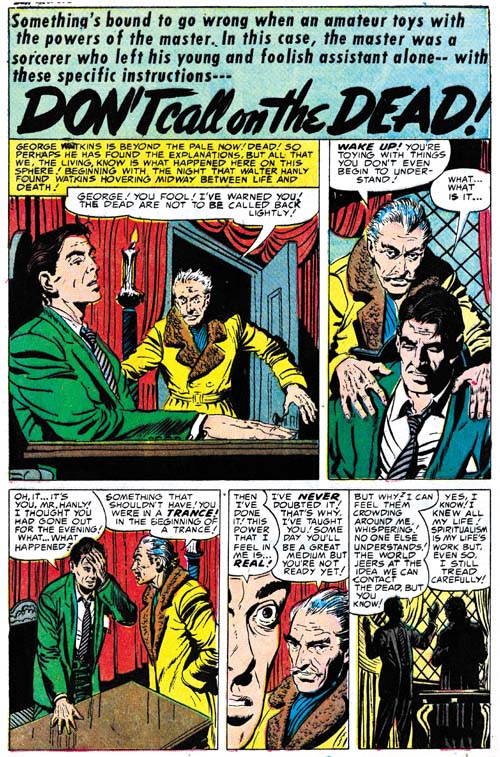
Black Magic #27 (November 1953) “Don’t Call on the Dead”, art by Bob McCarty
I have remarked how similar the art of Bob McCarty and John Prentice had become in the Art of Romance serial posts. Oddly this similarity does not extend to the work McCarty did for Black Magic. It is as if McCarty is purposely adjusting his style to the genre he is working on; something he had not done in the past. Do not misunderstand me the work in the Prize romance titles and Black Magic were clearly done by the same artist but for the love titles McCarty more strongly emulates Alex Raymond (and therefore more closely resembles Prentice) and for Black Magic retains more aspects of his earlier art.
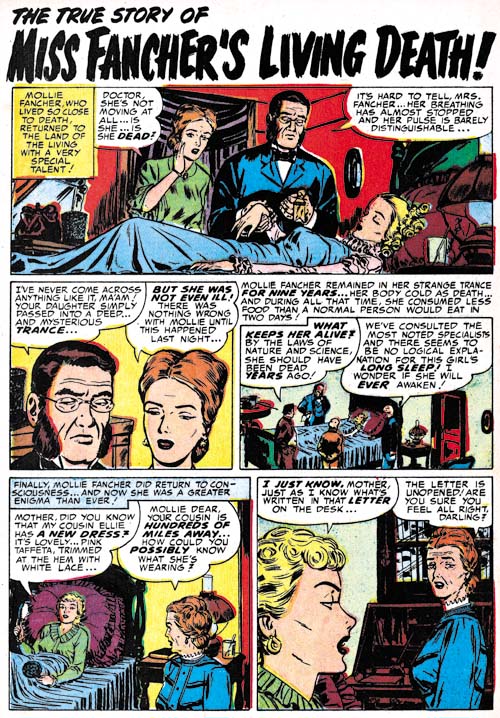
Black Magic #28 (January 1954) “Miss Fancher’s Living Death”, art by Al Eadeh
Al Eadeh’s art appears in Black Magic later then he does in the romance titles. The last romance work by Eadeh was in Young Romance #65 (January 1954) but Al appears in Black Magic #29 (March). I will return to this question in the next chapter of the Little Shop of Horrors.

Black Magic #28 (January 1954) “Screaming Doll”, art by Bill Benulis
Ben Benulis seems to have made a very brief stop at the Simon and Kirby studio. He only did three pieces (at least during this period) and they all appeared in January 1954. His romance work was the most interesting but “Screaming Doll” is still a nice piece of work.
The Little Shop of Horrors, Chapter 1 (#1 – 3), Expanding Their Fields
The Little Shop of Horrors, Chapter 2 (#4 – 6), Up and Running
The Little Shop of Horrors, Chapter 3 (#7 – 8), The Same Old Gang
The Little Shop of Horrors, Chapter 4 (#9 – 11), Another Hit
The Little Shop of Horrors, Chapter 5 (#12 – 14), New Faces
The Little Shop of Horrors, Chapter 6 (#15 – 17), Mix Bag
The Little Shop of Horrors, Chapter 7 (#18 – 20), Kirby Returns
The Little Shop of Horrors, Chapter 8 (#21 – 23), The Gang’s All Here
The Little Shop of Horrors, Chapter 9 (#24 – 26), The Party’s Ovetr
The Little Shop of Horrors, Chapter 10 (#27 – 29), A Special Visitor


